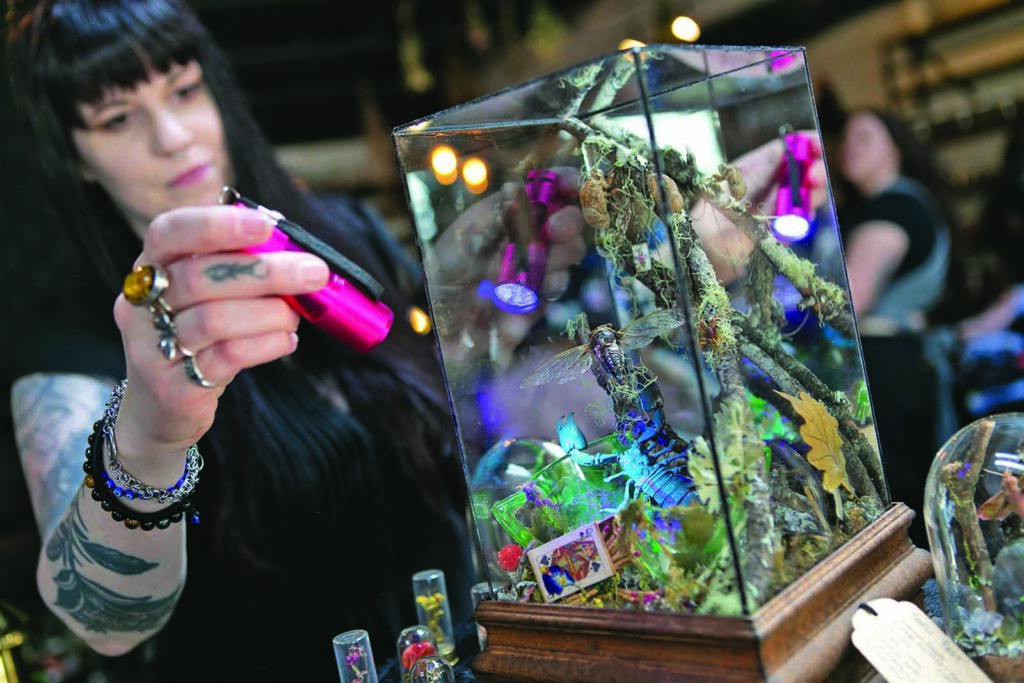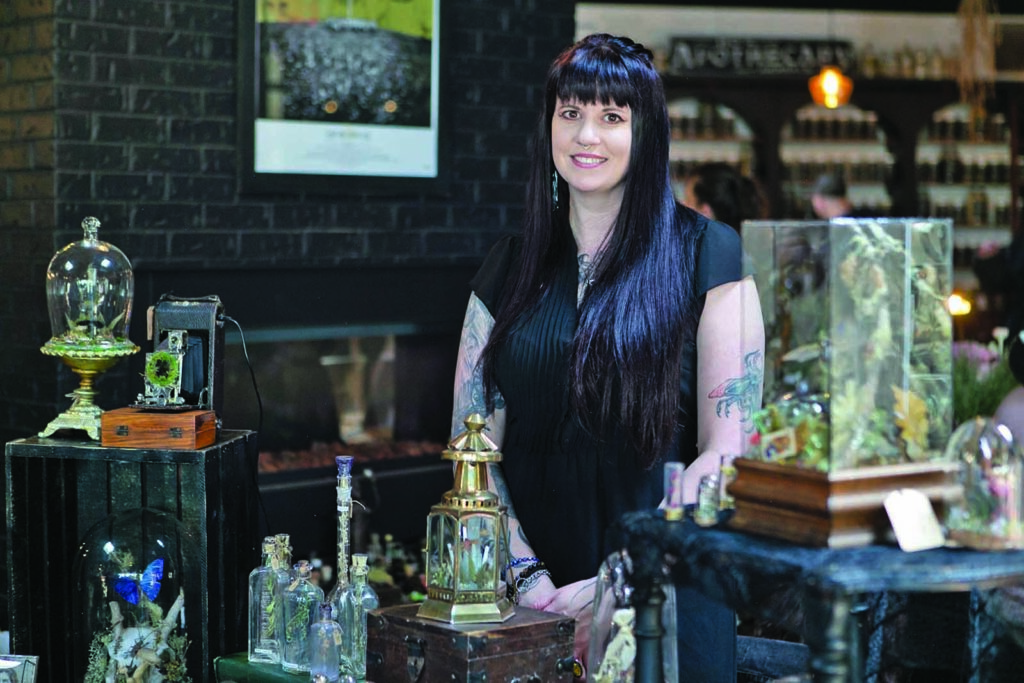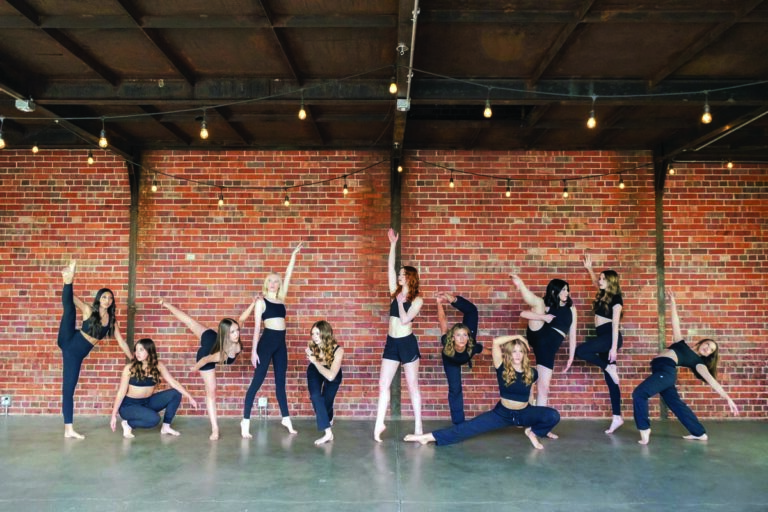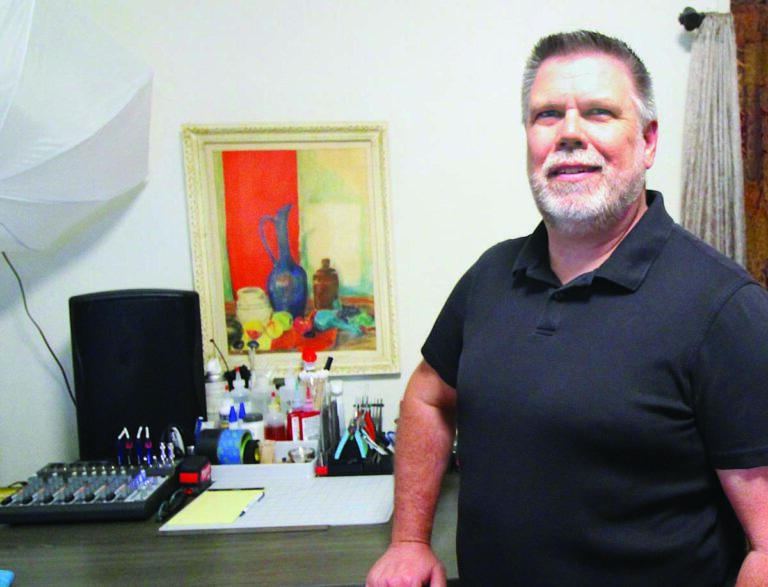The American Burying Beetle, listed as threatened by the U.S. Fish and Wildlife Service, feeds on decaying animals and helps them decompose. While that may sound pretty gross, insects of all kinds play a vital role in sustaining life — not just as nature’s undertakers, but through a variety of functions like pollination, pest suppression, and as a foundational food source in the food chain.
This is why insects play a central role in the work of Jess Ellis, the local artist behind Atropos Curios. She creates miniature, fantasy landscapes housed under glass, using found objects and natural materials like mosses, crystals, bones — and bugs. Her work transforms the macabre into the mesmerizing, inviting viewers to find beauty in the natural world’s complexities.
“I care so much about the insects,” Ellis said. “It’s so important to remember these small, unseen animals that we literally can’t live without.”
With habitat loss, pollution and climate change threatening many insect species with extinction, Ellis’s work highlights their significance.
Between 250,000 to 500,000 insect species have already gone extinct, and another 500,000 are threatened with extinction in the coming decades, according to a February 2020 study in the journal Biological Conservation.
“It’s easier to start a conservation effort for a big, cute, furry animal like a tiger. Then there’s the American Burying Beetle that eats decomposing corpses and most people are like, ‘ewww,’” Ellis said.
The ick factor is somewhat common amongst first time viewers of her work, and it’s a response that she can understand.
As a child, she enjoyed the occasional lady bug, but didn’t have a particular affinity for insects, and actually had a severe fear of spiders. When she was in college however, she stumbled upon a bug collection at an antique store and was inspired to work them into her thesis as an art student at CU Denver.
“It did kind of ick me a little bit at first because I just hadn’t done anything like that before and I had to get used to it. Then I became obsessed with them and I was like, ‘I wanna know more’”, Ellis said.
That appetite for learning fuels both her process and conceptual development and has been a driving force in the evolution of her work.
She volunteered at the Denver Museum of Nature & Science where she learned to pin and preserve insect specimens from experts in the field and further developed her fascination with bugs of all kinds.
“The one little barrier I had was spiders because of that arachnophobia,” Ellis said. “I loved spiders. I was just scared of them.”
Refusing to be held back by fear, she volunteered for the Congress of Arachnology and the CSU Bug Zoo where she eventually learned to feed tarantulas.

Flash forward and Ellis now has two tarantulas of her own along with a house spider that she moved with her from a previous apartment. She also used to have a black widow named Pearl who recently died. Pearl’s body is currently stored alongside a few other curiosities all waiting for their second life in one of Ellis’s landscapes.
“A lot of what I create is the prettier side of death,” Ellis said. “These things are dead, which does freak people out sometimes, but I like to bring them back to life. It’s like a resurrection.”
In one piece titled “Toxic Past,” a woodlouse spider, a scorpion and a few cicadas are intricately arranged under a glass case alongside uranium glass, vintage matches, and a squirrel’s skull. When illuminated with UV light, the uranium glass and scorpion glow beautifully.
You can see the work of Atropos Curios in person at RitualCravt near the intersection of 44th Avenue and Wadsworth Boulevard or online at atroposcurios.com. If you can get past the “ick factor” you’ll encounter an intricate and beautiful story about life and death.
“I really do want my work to inspire people to appreciate nature in all of its forms and not take it for granted,” Ellis said. “Another portion of it is to enlighten people about the cycle of death. Life is not possible without death and endings create new beginnings.”






